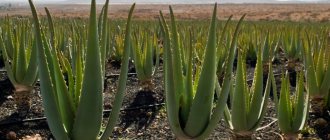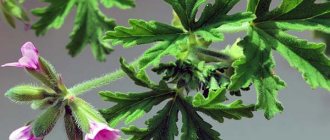Forsythia is a shrub that can be easily propagated both by seeds and by cuttings. And if the first method will take you several years, then the second - the most effective and not complicated - will help you get strong seedlings the very next year.
Forsythia can be propagated by cuttings in spring, autumn and winter. Depending on the time of year, different types of shoots are selected for this purpose. In the spring, after the shrub has faded, young green stems are formed, which are ideal for vegetative propagation. At the end of autumn and beginning of winter, lignified shoots that appeared this year are harvested.
- Forsythia: all about planting, care and propagation
In winter, spring and summer - it is always a different color! We talk about how to properly care for forsythia.
Forsythia care
Caring for an unpretentious forsythia is quite simple. It needs moderate watering, loosening and weeding of the tree trunk, fertilizing for the formation of flower buds and pruning.
Watering
The shrub does not need a special watering regime. In rainy summers, forsythia bushes are not watered at all; moisture from precipitation is sufficient. In drought, especially in hot, windy weather, the soil must be moistened. Watering 1-2 times a month is enough (1 bucket per bush). After watering, the soil must be deeply loosened (to the tip of a shovel), removing all weeds and mulched with compost.
Top dressing
Forsythia is fertilized three times per season:
- In early spring, it is necessary to carefully spread a layer of rotted manure around the trunk circle so as not to touch the trunk and branches, then water it well. Such organic feeding will ensure active growth and future lush flowering of the plant.
- In April, complex mineral fertilizer is applied to the soil (60-70 g per 1 m²)
- After flowering, the bush must be fed with Kemira-universal (100-120 g per 1 m²). During this period, the flower buds of the next season are laid.
Forsythia pruning
One of the important activities that is necessarily included in the plant care program is pruning. Proper pruning forms a beautiful, spreading crown of the bush and stimulates the growth of young shoots. The time to prune forsythia is after flowering. Young shoots must be shortened by a third above a strong bud. It is not recommended to cut off old shoots completely, but leave a “stump” to stimulate the growth of young shoots. In addition, forsythia requires regular pruning of branches creeping along the ground, as they take root very quickly. Once every 4 years, the shrub must be rejuvenated to achieve abundant flowering. All old branches are removed at the root, leaving several strong young branches. Pruning forsythia in the fall involves removing excess, damaged branches. Pruning should be done in early autumn so that the cuttings have time to heal before winter.
Rooting options
In potatoes
Rooting in potatoes is an unusual, but quite successful method.
A large tuber is selected, all its eyes are removed, then the cutting is simply stuck into the potato pulp and dug into the ground.
The cuttings are covered with film or a glass container to achieve a greenhouse effect, the soil is constantly moistened.
The method is suitable for vegetative propagation of any varieties of apple trees.
Lignified cuttings
There are 2 ways to root woody apple tree cuttings: at home and outdoors.
How to grow an apple tree from cuttings at home? To do this, the shoots are placed in boxes. A mixture of universal soil and straw (1: 3) is used as soil so that the density of the earth is not heavy to maintain aeration.
Options:
- Simple instillation;
- Using a plastic bag. The bottom is cut off, holes are made on the sides into which shoots are inserted. The method allows you to quickly extract seedlings;
- Forming drip irrigation using ropes or twisted pieces of cotton fabric. The tips fall into the water.
Rooting in a box
The box with plantings is installed in a warm place, but with ventilation, for example, near a window, to cool the top of the cuttings and prevent rotting of the bases.
Swelling of the buds indicates normal development, so you can discard unestablished specimens and replace them with new shoots.
When drip irrigation is used, small concentrations of complex fertilizers can be added to containers with water. If the cutting is actively growing in an apartment in winter, you need to shorten it, leaving a few lower leaves.
Rooting on the street
If there is no space at home, then you need to use the technology of rooting cuttings outside using soil of the same composition and sand (10 cm layer) as mulch, which prevents waterlogging and the growth of weeds, and also ensures the preservation of aeration.
Green apple tree cuttings for rooting outdoors.
- Recesses are created into which the cuttings are stuck. During the growth of shoots, organic fertilizers, especially a solution of bird droppings, will help their development.
- The drip irrigation method using scraps and ropes can also be arranged.
- The outdoor garden bed is protected from night spring frosts and excessive sun using agril, lutrasil, but not film.
- During the day, the shelter is raised to provide oxygen access. The level of lighting required varies.
- When harvesting shoots from a dormant tree, cultivation should be carried out in the dark, but summer shoots require a large amount of light.
We propagate forsythia from green cuttings
Propagation of forsythia by green cuttings also involves the use of young shoots that are no more than one year old. They need to be harvested after flowering ends, between the end of May and the beginning of June. The good thing about this plant is that almost all green cuttings take root well if you keep the soil moist. For cuttings, select those shoots that are just beginning to become woody. Its optimal length is 20 cm. Do not remove leaves from a cut branch under any circumstances! They will become a kind of signal that will help you understand whether the new seedling has taken root or not. As soon as the leaves wither and darken, cuttings of forsythia in the summer can be stopped, since it did not produce roots.
Planting of cuttings should be carried out in pre-moistened and loosened soil. A mixture of ordinary fertile soil and sand is best suited for this - such soil is quite nutritious and, most importantly, light, which does not interfere with the germination of roots. Forsythia cuttings continue at the next stage - planting. There is no need to bury the seedling more than 5 cm into the ground, and try to position it obliquely. Planting is carried out not only in a seedling box, since it takes root well in an ordinary bed if everything is done correctly. In order for rooting to go faster, you need to cover the planting material with film. The roots of the cuttings form after a month, but care should be taken to ensure that they do not die throughout the summer. Propagation of forsythia by cuttings does not require special skills from the summer resident, and no one will have any problems caring for young shoots that have taken root. So, in the heat, you need to arrange shading for them and water them with a watering can, since without a nozzle the soil can be easily washed off. Adult forsythia is indifferent to moisture and does not require a lot of it, but if you are rooting young cuttings, then water is very important here. You need to ensure that the soil inside remains moist at all times - this is the most important key to the success of the entire event. Within a month, the established shoots can be transferred from a shaded bed or nursery to a permanent place (always with a lump of earth!). Some experienced gardeners recommend leaving the forsythia in this place until next spring and replanting it only a year later. Then she will have time to build up a strong root system.
Regardless of whether you leave the young bush in its old place or transplant it to a new one, it will definitely need to be covered. Otherwise, it will definitely freeze, and then your efforts will be in vain.
Quick ways
The 4 methods of propagating forsythia described above are not all. The fastest results are obtained by root shoots, as well as by dividing the bush. How to cut forsythia using this method? First you will have to dig up the bush and carefully divide the rhizome. Cuts on the mother plant will need to be treated and covered with garden varnish, and then planted again. The separated plant is processed in the same way and planted in shade or partial shade. Caring for such a seedling is carried out as usual; only at first you need to ensure that the soil moisture is constantly at the same level. But not for long, only a couple of weeks, after which watering is reduced. You can water the transplanted bush with fertilizer or a special composition that accelerates rooting.
For someone who would like to see forsythia on their site, such an abundance of propagation methods will be a real godsend, because it will be possible to get several bushes of an elegant bush at once, which will grow well in the future. If you doubt that you will be able to propagate forsythia from cuttings, the video below will give you answers to your questions. It is worth noting that when planting it, even treatment with a rooting agent is not necessary, since it takes root well.
How to plant?
Forsythia cuttings can be planted indoors or outdoors. Usually they are planted in a closed one immediately, but in it they take root faster. In any case, for better rooting, it is recommended to place the cuttings in a special solution, for example, in Kornevin, before planting. It is necessary to leave it in the solution for an average of 4–5 hours, but it can be longer.
In closed ground
To plant green forsythia cuttings in closed ground, you should prepare loose soil that allows air to pass through well. Cuttings should be planted at a distance of 5–8 cm from each other and to a depth of no more than 5 cm. It is best to plant them in a transparent container, since developing roots will be best visible in it. It is recommended to cover the top of the cuttings with a glass jar or a large plastic cup; you can use a bottle to create a kind of greenhouse in which rooting of plants will take place most quickly.
The cuttings should be regularly ventilated and watered, using a small watering can; if after a month roots are visible on the shoots, then the plants can be safely transplanted to their future permanent place of residence.
In open ground
Lignified cuttings that have been stored in a cold place all winter should be properly planted in the ground. This is done in the spring. It is best to choose warm weather and decide on a location in advance. Before planting, the cuttings are renewed. Next, you should dig a small hole and water it; after the water is completely absorbed, the young plant should be placed in it to a depth of no more than 10 cm. 2-3 buds should be left on the surface. Compact. If several cuttings are planted at once, the distance between them should be approximately 5–8 cm.
With the arrival of the first frosts, young plants should be covered, since in a short period of time they will not have time to grow and get stronger.
Forsythia propagation in water in spring is extremely rare. Most of these plants do not take root, and therefore few people undertake experiments. Nevertheless, this is done very simply.
- Green cut branches are placed in small glasses of water, where a plant growth stimulator is added in advance.
- After the first roots appear, the plants are transferred either to open or closed ground. But “growing” should still be carried out by creating greenhouse conditions, that is, covering the plants with a jar or bottle.
- In the fall, stronger plants can be safely transferred to a permanent place of residence, giving preference to less sunny areas of the garden.
It is worth noting that the technique of planting spring and summer cuttings in closed and open ground is no different. But in all cases, it is advisable to cover young plants with a jar, constantly water and ventilate them, and it is also recommended to shade the area if we are talking about open ground.
Recommendations
Professional gardeners recommend not to rush and not to transplant rooted cuttings of forsythia from a pot directly into the ground; it is better to do this in the spring of next year, when the plants are fully strengthened and have expanded their root system.
If the cuttings were prepared last year, then it is recommended to dilute them with a weak solution of potassium permanganate, in which they should be soaked. This will make it easier to root the plants in the future. After soaking, the sections should be renewed.
It is best not to cut too thick cuttings from forsythia, otherwise the whole process will be delayed in the future.
When the first frosts appear, young forsythia plants in open ground should be covered by at least 20 cm, using dry leaves or straw.
It is very important not to prune the bush too often; this should be done at least after a year, since forsythia flowers bloom on the shoots of last year, but if you cut everything off, the flowering will be very sparse. If you cut the bush correctly, and also carry out all the steps to root the plant sequentially, then after a year the young plant will be able to please you with its flowering
Growing forsythia can be a lot of fun for novice gardeners, as cuttings are a very exciting activity.
If you cut the bush correctly, and also carry out all the steps to root the plant consistently, then after a year the young plant will be able to please you with its flowering. Growing forsythia can be a lot of fun for novice gardeners, as cuttings are a lot of fun.
How to propagate forsythia by cuttings, see the following video.
Reproduction of shrubs by cuttings
Propagation of shrubs by direct or green cuttings
This is the most convenient and frequently used method for cutting shrubs. Cuttings are taken from shoots of the current year that have finished or are finishing growth, but have not yet had time to become lignified. They are also called green or summer.
Cuttings are taken from young plants. It is advisable to use old mother plants only the next year after rejuvenating pruning carried out this year.
green hydrangea cuttings
For cuttings, use lateral shoots formed on last year's growths in the lower tier of the illuminated part of the plant. It is better not to take vertically growing shoots and tops for propagation.
There is no delay in planting green cuttings; it is advisable to do it as soon as possible. But, if transportation is necessary, the cuttings are placed obliquely in a container with moist sphagnum.
In such packaging they can be stored in the refrigerator, but not longer than two days. In any case, at all stages of working with green cuttings, they should not be allowed to dry out: cut shoots can also be placed in water in the shade.
This method of reproduction is suitable for:
Garden crops: actinidia, barberry, privet, weigela, hydrangea, derain, viburnum, clematis, bladderwort, lilac, chaenomeles, mock orange, spirea, honeysuckle, currant, rose.
Indoor crops: hibiscus, large-leaved hydrangea, oleander.
Propagation of shrubs by semi-lignified cuttings
These are shoots that are already covered with bark. Such cuttings are taken starting from the end of June: the tops of the semi-lignified shoots of the current year are cut off and cut into cuttings with two internodes. The lower leaves are removed. The cuttings are dusted with a root formation stimulator and planted in pots in a mixture of peat and sand in equal quantities. After 2–3 months, roots form on them.
semi-lignified cuttings of spirea
This method of reproduction is suitable for:
Garden crops: hydrangeas, spirea, rhododendrons, barberry, heather, hemlock, holly, juniper, magnolia, privet, viburnum, dogwood, forsythia, honeysuckle, abelia, broom.
Indoor crops: azalea, camellia, ivy, gardenia, oleander, hibiscus, large-leaved hydrangea.
Propagation of shrubs by cuttings with heel (heel)
A type of semi-lignified cuttings are lateral branches that grow in mid-summer on shoots that have already overwintered. They are not cut off, but torn off with a heel - a piece of root or bark with a thin layer of wood. The heel is obtained when the shoot is not cut off, but broken out from the base.
viburnum stalk with heel
This method of reproduction is suitable for:
Garden crops: mock orange, Thunberg barberry varieties, thuja, juniper.
Propagation of shrubs using hammer-shaped cuttings
The basis of the cutting is the same side branch on last year's shoot, as in cuttings with a heel. Only the cutting is not torn off, but is cut out with a part of the woody branch, which protects the cutting from rotting.
hammer-shaped cuttings of virgin grapes
This method of reproduction is suitable for:
Garden crops: virgin grapes.
Propagation of shrubs by woody cuttings
These are taken from mature annual shoots that have normal bark. Cuttings are harvested in the fall after leaf fall or early in the spring, and cuttings collected in the spring are immediately planted for rooting, and autumn cuttings can be planted both in the fall and in the spring (then they are stored in the refrigerator, basement or in the snow before planting).
woody currant cuttings
Lignified cuttings root more slowly and with a lower percentage of success, but they require less care (no need to water or spray), so this method is convenient for many.
This method of reproduction is suitable for:
Garden crops: poplar, hydrangea, snowberry, forsythia, mock orange, fruit grapes, abelia, hemlock, holly, juniper, privet, forsythia, euonymus, broom.
Indoor crops: camellia, ivy.
comparison of types of cuttings
Other options
Often, to propagate golden lilacs, cuttings are used, which come in several types.
Green cuttings. Planting material is cut in the first days of June. The gardener should remember that cuttings should not be cut frequently, as this can harm flowering. Branches that have just been cut must be placed in a container of water, where a growth stimulator, for example, “Kornevin”, should be added. Yeast, aloe juice, and honey are also often added to the liquid. After the first roots appear, the forsythia should be transferred to open ground. For this purpose, it is better to give preference to a secluded place or growing in a greenhouse. For the normal formation of full-fledged bushes, the crop needs to be provided with moisture and warmth. In the fall, when the bush grows to the sides, the golden lilac can be dug up and planted in a permanent place.
The longest process is considered to be the propagation of forsythia using seeds. This option is characterized by particular productivity, since many new crops can grow from 1 shoot. Procedure steps:
- collection of ripened seeds in October;
- stratification for two months;
- sowing in shallow boxes in spring;
- keeping the box in a warm room with periodic spraying;
- monitoring seed germination, which should occur in 20-40 days;
- transferring sprouted crops to the flower bed after 12 months.
After flowering, golden lilac can be propagated by bush division. To do this, the plant is dug up entirely or only part of it. A section of the root system is cut off with pruning shears and, together with the crop, is transferred to a new area. For planting, you should choose a sunny area, but in the first half a month the seedling should be shaded.
Forsythia in landscape design
Forsythia looks great against a dark green background of conifers: juniper, thuja, spruce, and also against a green lawn. It looks great as a single plant - a bright golden spot in the spring garden, or in group plantings with other flowering ornamental shrubs. Drooping forsythia looks especially elegant and delicate; it is used to decorate slopes, alpine hills, hedges and buildings.
Forsythia is an attractive and unpretentious shrub that decorates any area with luxurious golden blooms at a time when many trees and shrubs have not yet woken up from winter sleep. By creating favorable conditions for the growth and development of forsythia, you will enjoy its unusual beauty for many years.
Description
Forsythia is an ornamental shrub that blooms in early spring. Before this plant produces leaves, its branches are completely covered with bright yellow miniature flowers. This plant is especially suitable for planting in dachas and private country estates, since it is very unpretentious. There are about 13 varieties of forsythia known, which grow well in the middle zone of the country. The advantage of this plant is also that it can be propagated independently in different ways.
Forsythia - propagation by cuttings in spring
Forsythia is a perennial shrub belonging to the olive family that blooms magnificently in early spring with a huge number of bright lemon-yellow flowers. The flowering of this shrub can be observed in early spring, namely from March to April. The brighter and richer the blooming forsythia stands out against the background of the garden that is just beginning to wake up after winter. The peculiarity of this plant is that only after the flowering period does the bush produce young leaves. Many gardeners want to see this bush on their site, because it is a kind of confirmation of the coming of spring. This is easy to do, because propagating forsythia by cuttings in the spring is very simple.
Forsythia propagation options
The most productive way to propagate this plant is by sowing seeds. This option will allow you to grow several healthy and strong bushes at once. However, this method is suitable only for those who are willing to wait for the bush to grow and become stronger. It may take several years for the plant to bloom for the first time.
But there is another way - propagation of forsythia shrubs by green and lignified cuttings, or layering.
Propagation of forsythia by layering
In order to propagate the bush through layering, you need to select a young flexible forsythia branch that grows in the lower part of the bush at the end of summer or early autumn, bend it to the ground and dig it with fertile soil. The young shoot will take root after some time. To speed up this process, you can lightly cut the bark on the branch in the place that will be covered with earth. With this option for propagating forsythia, already next spring you can cut off a shoot from the main bush and, if desired, dig it up and replant it. A bush propagated through layering will bloom in a year.
Propagation of forsythia by cuttings
Forsythia can be successfully propagated using woody cuttings. To do this, in late autumn or winter, during the dormant period of the plant, it is necessary to prepare the material. Thick annual shoots of a bush about 15 cm long are perfect. Until spring, the cuttings should be stored in a cool cellar or on the bottom shelf of the refrigerator. In the spring, cuttings can be planted in a greenhouse or immediately in a garden bed, having previously updated the cuttings.
Forsythia can also be propagated from green cuttings. In this case, the material must be prepared in late spring or early summer, when the flowering of the plant has already ended. You can plant cuttings in the ground immediately if the weather is not very hot, or you can wait until autumn.
Cut branches take root surprisingly quickly. When propagating forsythia by cuttings, you can leave them in water, and they will soon take root and be ready for planting. For green cuttings, soil mixed with sand is suitable. You can plant them either directly in open ground or in separate boxes. Prepared cuttings must be deepened to
Propagation of a forsythia bush through cuttings is very effective - the cuttings will take root in one month. Until the plant takes root, it needs to be looked after. Young forsythia should be protected from a lot of direct sunlight in hot weather, and the soil should be kept moist. These actions will help the plant take root faster. When this happens, you can replant the bush, but experienced gardeners advise waiting and letting the young bush overwinter under cover of spruce branches or straw, and only then, in early spring, replanting it in a permanent place.
Pests and diseases
Among flowering shrubs, forsythia is resistant to pests and diseases.
Pests
Of the pests, the most annoying to forsythia is aphid. This small and prolific insect pierces young leaves or buds with its proboscis and sucks the juice from them.
A dangerous pest is nematodes - microscopic worms that attack both leaves and roots. They suck the juice from plants, which leads to their depletion. The appearance of root nematodes is often promoted by high humidity in the root zone.
Attention! They use many methods of pest control: chemicals, folk remedies. Among folk remedies, a soap solution with ash or a solution of onion peels is successfully used.
Diseases
The most serious diseases that can affect forsythia are:
- bacteriosis;
- moniliosis
Bacteriosis cannot be cured not only in forsythia, but also in other crops. The disease manifests itself as premature yellowing of the leaves, the veins on them turn black. The plant quickly fades. It must be uprooted and burned. Disinfect the soil.
Moniliosis (monilial burn) is a fungal disease that often appears during flowering. On individual branches, leaves or flowers begin to wither and darken. When a disease is detected, infected branches are cut down to a healthy area and burned. The entire plant is treated with fungicidal preparations.
Bush pruning
Aftercare after transplant
To get an attractive shrub to decorate the garden, it is not enough to know how to root forsythia with cuttings
It is also important to observe proper care after transplanting the plant to its permanent location.
Preparing the soil for transplanting seedlings
Yellow shrubs in spring require properly selected soil. The culture does not tolerate acidic and heavy soil. It is also necessary to avoid places with close groundwater levels. Before planting the seedling, you need to mix the soil from the planting hole with humus and sand in a ratio of 1:1:2.
Additional Information! Before planting, drainage is placed in the hole. For this, large crushed stone is used.
Watering
Moisture is required for the development of shrubs. The seedling should be watered as the soil dries. After the seedling gets stronger, the frequency of watering is reduced to 1 time every 2 weeks.
Seedling care
Fertilizer application
In order for the crop to bloom vigorously, fertilizers must be applied. In the first year after planting, fertilizing is not used. In the spring of the second year, after the buds awaken, nitrogen fertilizers should be used. To increase color, potassium-phosphorus fertilizers are used, which stimulate the formation of buds. After the bush stops blooming, fertilizing is reduced. In summer, complex fertilizers can be used. At the end of summer, an organic type of fertilizer is used.
Pruning bushes and shelter for the winter
Autumn is the period when you need to prepare the crop for the first frosts. A few weeks before frost, you need to prune the bush. All branches are shortened, and damage to the crop is removed.
The bush must be carefully tied with twine and bent in the ground. The root is covered with a mixture of humus and foliage
Branches - fallen leaves or agrofibre.
Autumn harvesting of cuttings
Interesting! In spring it is necessary to open the bush. Otherwise, mold may appear on the bark.
Forsythia spring shrub will decorate any garden. Propagated by layering, seeds and cuttings. The last method is the most common, as you can obtain the required number of seedlings. Propagation of the crop by cuttings in the summer allows you to plant young shoots in open ground. Experienced gardeners recommend seedlings from 1 year old for seedlings.
Preparing for winter
Many types of forsythia tolerate frosts of 10 degrees, but recently transplanted bushes should be insulated with covering material.
Adult plants, despite their frost resistance, should also be prepared for wintering:
- Water thoroughly and place a thick layer of mulch around the bush.
- Tilt the branches towards the ground and secure them.
- Breathable material is used for shelter.
In the spring, after removing the cover, the branches are straightened and the mulch is raked away from the roots.
All types of forsythia are considered primrose shrubs, which is why they have earned their rightful place in the garden. The advantages of early flowering include ease of propagation, undemanding care, and the ability to be used in group and single compositions.











